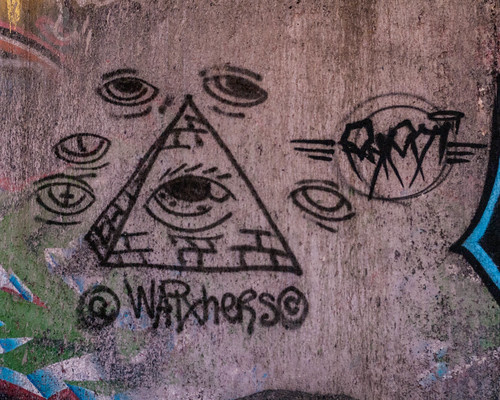 |
| Found Amid the Crumbling Infrastructure of Jersey City, NJ |
Emily Gowers reviews Kristina Milnor, Graffiti and the Literary Landscape in Roman Pompeii (Oxford UP) in TLS:
In 1987, Susan Sontag wrote earnestly about the “indecipherable signatures of mutinous adolescents . . . washed over and bitten into the façades of monuments and the surfaces of public vehicles in the city where I live: graffiti as an assertion of disrespect, yes, but most of all simply an assertion . . . the powerless saying: I’m here too”. For Plutarch, on the other hand, writing around AD 100, it was so much tedious drivel, an intrusion into shared space which preyed on people’s natural nosiness: “There is nothing written in them which is either useful or pleasing – only so-and-so ‘remembers’ so-and-so, and ‘wishes him the best’, and is ‘the best of his friends’, and many things full of such ridiculousness”.From opposite ends of the spectrum, both accounts pit graffiti against the combined weight of authority, community and public property. Throughout history, unlicensed writing on walls has been linked with anti-establishment behaviour, from schoolboy pranks to full-blown insurgency. The two came together in the incident that is said to have kindled the current war in Syria: fifteen children arrested and tortured for drawing revolutionary slogans like “No teaching, no school, till the end of Bashar’s rule” on a town wall....Traditionally, graffiti infests the grey areas between open and hidden space: dark alleys, public conveniences, subways and disused land – places where disappearing trolls can leave their residue to shock, engage or amuse casual passers-by.
Note, however, that
Pompeian graffiti is not always the naive, unmediated vox populi it seems to be. These amateur scrawls often engage boldly and gleefully with the central productions of high literary culture, are as self-conscious about their materiality and creative powers as more respected literary texts, and collapse traditional distinctions and hierarchies between oral and written and primary and secondary to a confusing degree. Few can compete with the selfreflexivity of the following priceless specimen: “I’m amazed, wall, that you haven’t fallen down in ruins, since you bear the tedious outpourings of so many writers”. But many other graffitists draw superfluous attention to the written nature of their interventions. As well as supplementing other forms of exchange and territory-marking in the ancient townscape, they also stake a claim to unauthorized authorship, even to a precarious kind of immortality.
Then as now, writing became drawing:
H/t 3QD.Pompeian graffitists seem to have been fascinated by the physical and visual aspects of writing. Latin (in)scribo, like Greek grapho, meant both “write” and “draw”, and there was a strong sense of both the interconnectedness of words and images and the talismanic allure of graphic design: in magic word-squares, for example, and laboriously produced alphabets, whether these are displaying pride in new-found literacy, symbolically representing all writing, or just testing the match between surface and implement. A whimsical doodle that advertises itself as a “game of snakes” comes in the shape of a sinuous serpent, hissing with sibilants – a spiritual ancestor to Edwin Morgan’s one-line reptilian conceit, “Siesta of a Hungarian Snake” (“s sz sz SZ sz SZ sz ZS zs ZS zs zs z”).
No comments:
Post a Comment